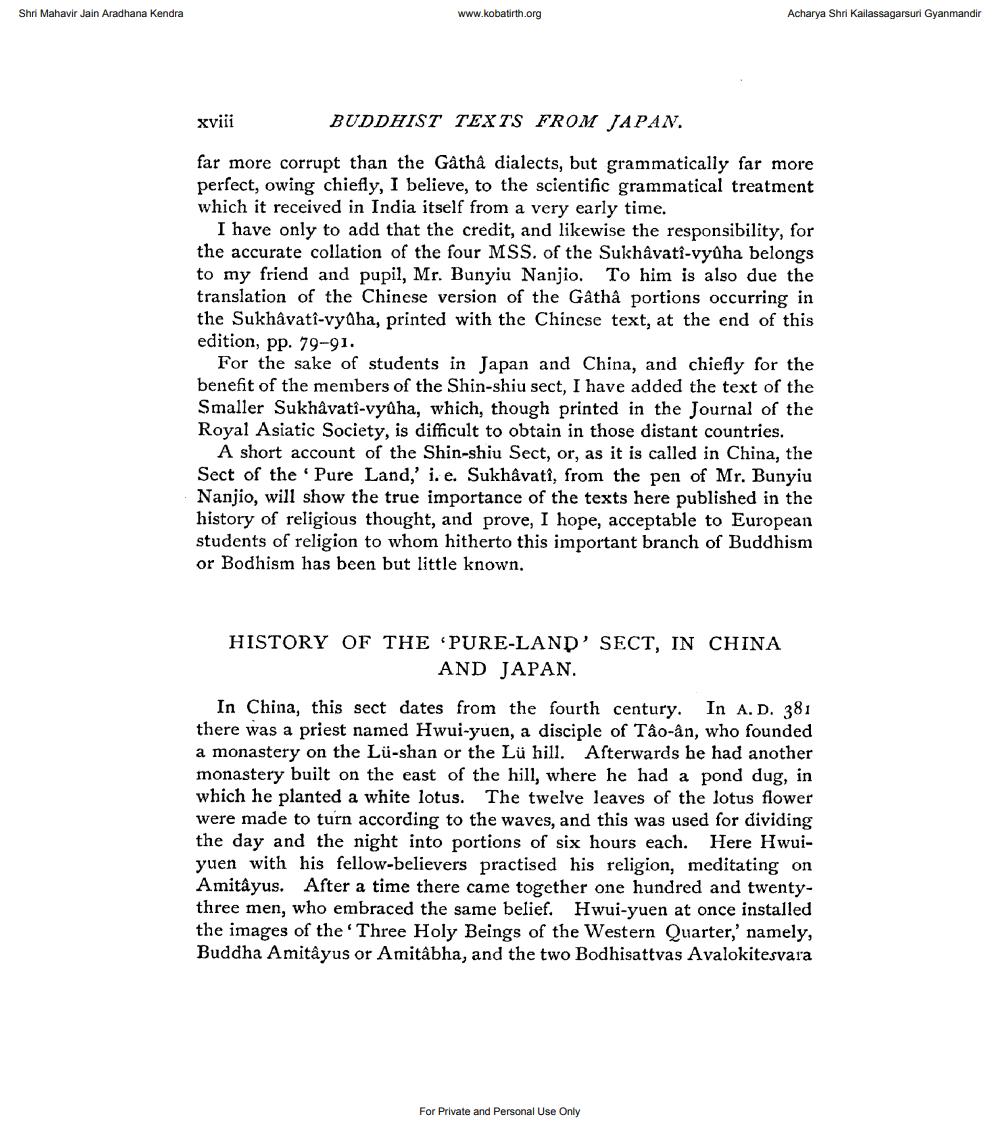________________
Shri Mahavir Jain Aradhana Kendra
www.kobatirth.org
xviii
BUDDHIST TEXTS FROM JAPAN.
far more corrupt than the Gâthâ dialects, but grammatically far more perfect, owing chiefly, I believe, to the scientific grammatical treatment which it received in India itself from a very early time.
I have only to add that the credit, and likewise the responsibility, for the accurate collation of the four MSS. of the Sukhâvatî-vyûha belongs to my friend and pupil, Mr. Bunyiu Nanjio. To him is also due the translation of the Chinese version of the Gâthâ portions occurring in the Sukhâvati-vyaha, printed with the Chinese text, at the end of this edition, pp. 79-91.
Acharya Shri Kailassagarsuri Gyanmandir
For the sake of students in Japan and China, and chiefly for the benefit of the members of the Shin-shiu sect, I have added the text of the Smaller Sukhavati-vyûha, which, though printed in the Journal of the Royal Asiatic Society, is difficult to obtain in those distant countries.
A short account of the Shin-shiu Sect, or, as it is called in China, the Sect of the 'Pure Land,' i. e. Sukhâvatî, from the pen of Mr. Bunyiu Nanjio, will show the true importance of the texts here published in the history of religious thought, and prove, I hope, acceptable to European students of religion to whom hitherto this important branch of Buddhism or Bodhism has been but little known.
HISTORY OF THE PURE-LAND' SECT, IN CHINA AND JAPAN.
In China, this sect dates from the fourth century. In A. D. 381 there was a priest named Hwui-yuen, a disciple of Tâo-ân, who founded a monastery on the Lü-shan or the Lü hill. Afterwards he had another monastery built on the east of the hill, where he had a pond dug, in which he planted a white lotus. The twelve leaves of the lotus flower were made to turn according to the waves, and this was used for dividing the day and the night into portions of six hours each. Here Hwuiyuen with his fellow-believers practised his religion, meditating on Amitâyus. After a time there came together one hundred and twentythree men, who embraced the same belief. Hwui-yuen at once installed the images of the 'Three Holy Beings of the Western Quarter,' namely, Buddha Amitâyus or Amitabha, and the two Bodhisattvas Avalokitesvara
For Private and Personal Use Only




